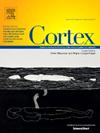Effects of alertness on perceptual detection and discrimination
IF 3.3
2区 心理学
Q1 BEHAVIORAL SCIENCES
引用次数: 0
Abstract
The level of alertness fluctuates throughout the day, exerting modulatory effects on human cognitive processes at any moment. However, our knowledge of how alertness level interacts with specific cognitive demands and perceptual rules of a task is still limited. Here we used perceptual decision-making paradigms to explore this issue. We analysed data from four different experiments involving a total of 113 participants: 1) auditory masking detection, 2) sensorimotor detection, 3) auditory spatial discrimination, and 4) auditory phoneme discrimination. We examined participant performance during the natural transition from awake (high alertness) to drowsy (low alertness). First, we fitted psychometric functions to the performance in EEG-defined high and low alertness metastable states. Second, we modelled slope and threshold from the fitted sigmoidal curves as well as signal detection theory measures, including perceptual sensitivity (d’) and response bias (criterion). We found lower detection and discrimination sensitivity to stimuli as alertness level decreases, signalled by a shallower slope and a lower d’, while the threshold increases slightly and equivalently across experiments. We observed no change in criterion during the transition. Zooming in, we observed that the decrease in sensitivity measured by slope was stronger for discrimination than for detection decisions, indicating that lower alertness impairs the precision of decisions in discriminating alternatives more than in identifying the presence of a stimulus around the threshold. Taken together, these results suggest that alertness has a common effect on perceptual decision-making and differentially modulates detection and discrimination decisions.
警觉性对知觉检测和辨别的影响
警觉性水平在一天中波动,在任何时刻对人类的认知过程产生调节作用。然而,我们对警觉性水平如何与特定的认知需求和任务的感知规则相互作用的了解仍然有限。在这里,我们使用感知决策范式来探讨这个问题。我们分析了四个不同实验的数据,共涉及113名参与者:1)听觉掩蔽检测,2)感觉运动检测,3)听觉空间辨别和4)听觉音素辨别。我们检查了参与者在从清醒(高警觉性)到昏昏欲睡(低警觉性)的自然过渡过程中的表现。首先,我们将心理测量函数拟合在脑电图定义的高警觉性和低警觉性亚稳态状态下的表现。其次,我们从拟合的s型曲线以及信号检测理论测量中建模斜率和阈值,包括感知灵敏度(d ')和响应偏差(准则)。我们发现,随着警觉性水平的降低,警觉性水平的检测和识别敏感性降低,这是由较浅的斜率和较低的d '表示的,而阈值在实验中略有相等地增加。我们观察到在过渡期间标准没有变化。放大后,我们观察到,通过斜率测量的灵敏度下降对辨别的影响比对检测决策的影响更大,这表明较低的警觉性损害了辨别替代方案的决策精度,而不是识别阈值周围刺激的存在。综上所述,这些结果表明,警觉性对感知决策有共同的影响,并对检测和辨别决策有差异调节。
本文章由计算机程序翻译,如有差异,请以英文原文为准。
求助全文
约1分钟内获得全文
求助全文
来源期刊

Cortex
医学-行为科学
CiteScore
7.00
自引率
5.60%
发文量
250
审稿时长
74 days
期刊介绍:
CORTEX is an international journal devoted to the study of cognition and of the relationship between the nervous system and mental processes, particularly as these are reflected in the behaviour of patients with acquired brain lesions, normal volunteers, children with typical and atypical development, and in the activation of brain regions and systems as recorded by functional neuroimaging techniques. It was founded in 1964 by Ennio De Renzi.
 求助内容:
求助内容: 应助结果提醒方式:
应助结果提醒方式:


